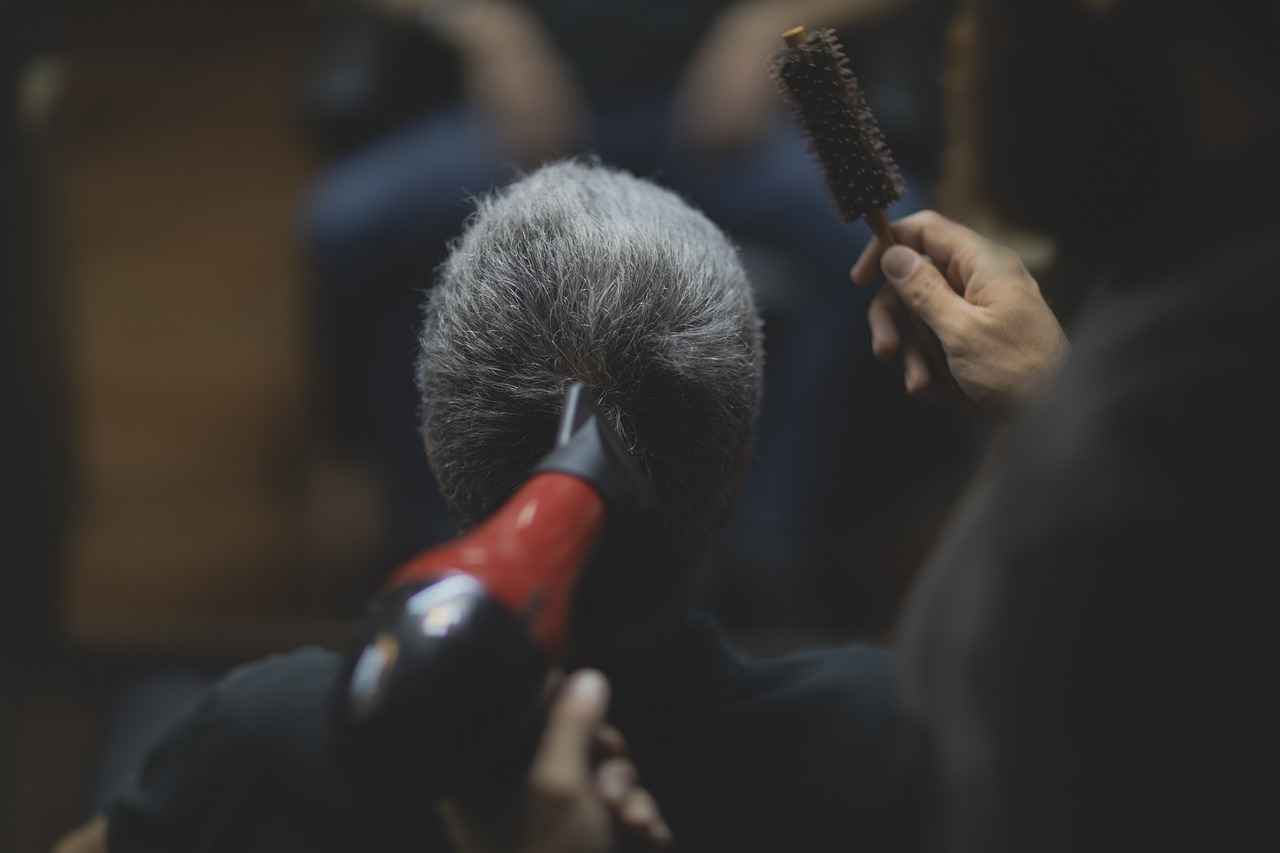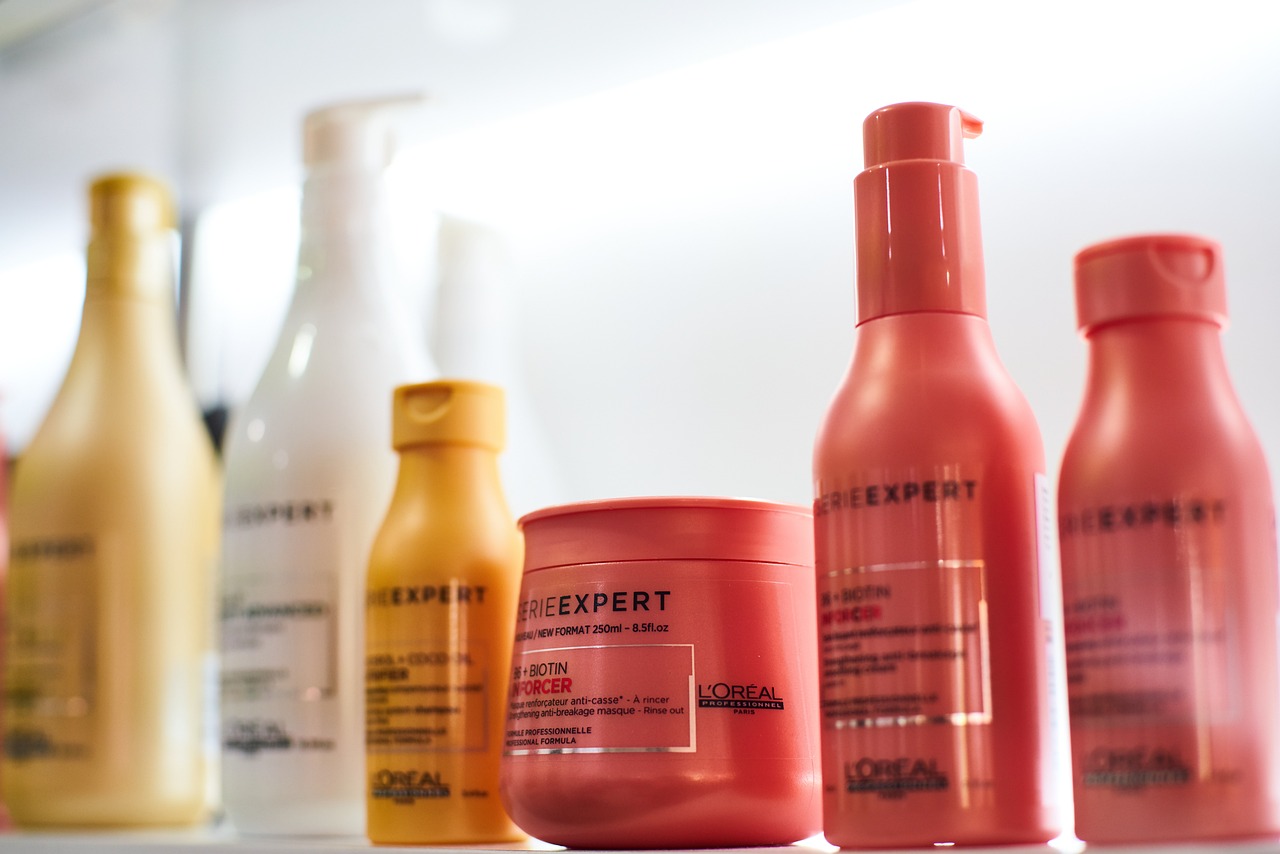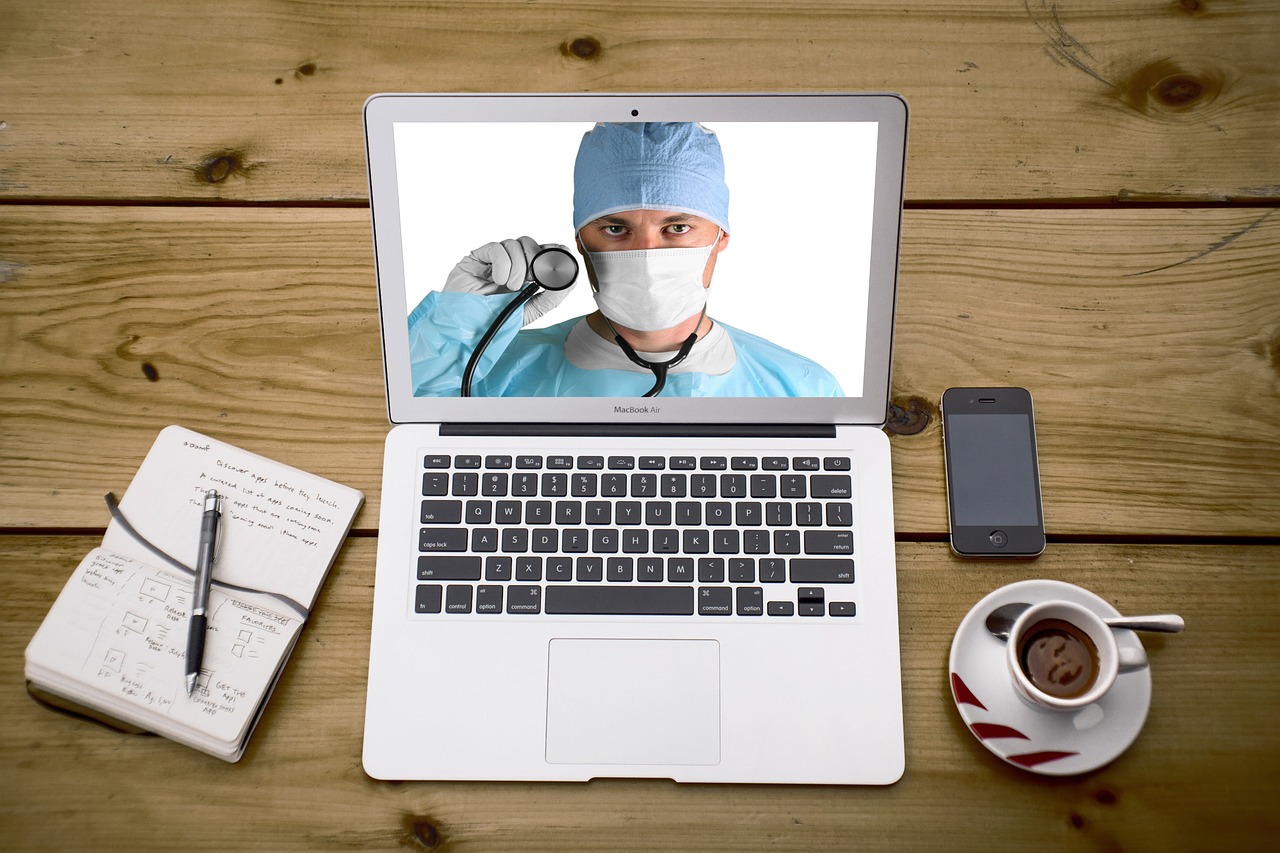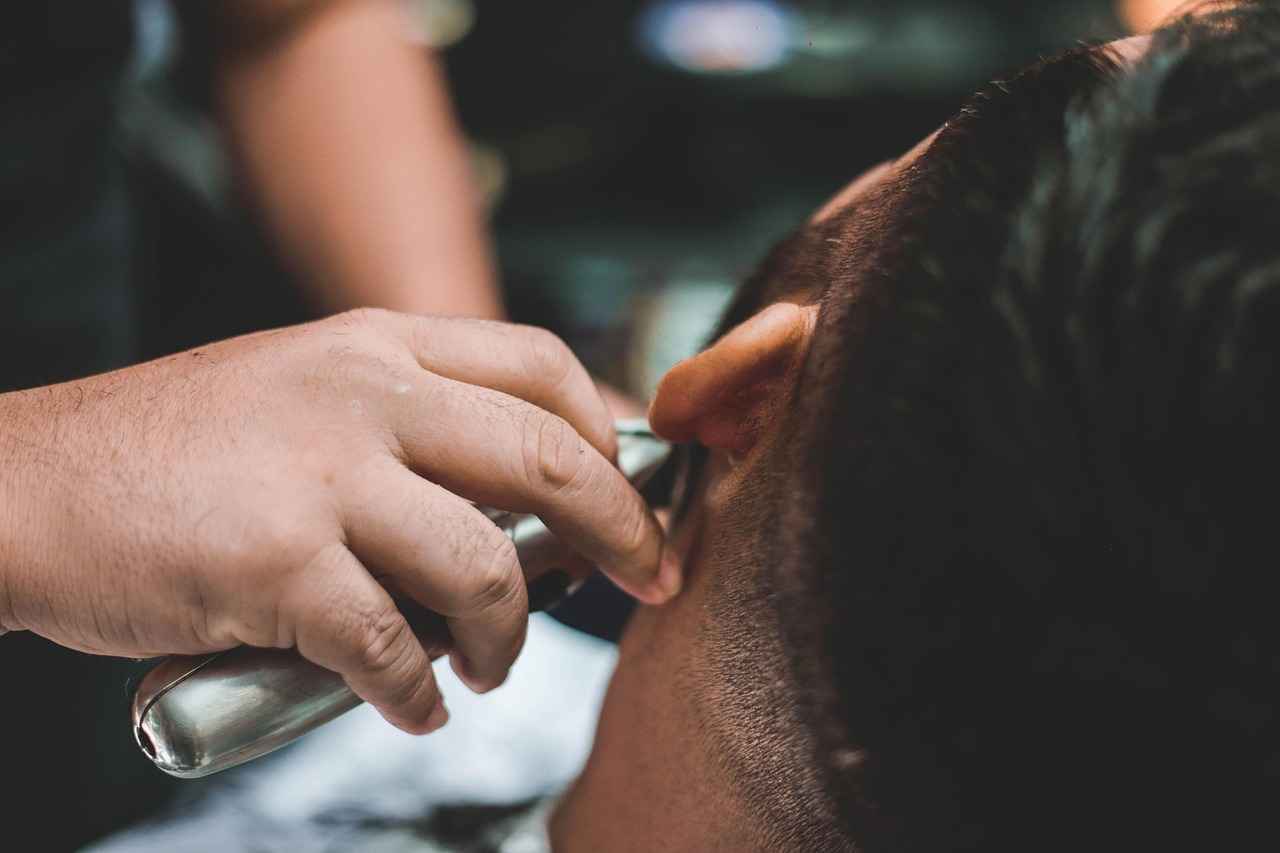This article delves into the growing trend of beard and eyebrow transplants at hair clinics, examining the various techniques, benefits, and important considerations for potential candidates.
Understanding Hair Transplant Techniques
Hair transplant techniques have evolved significantly, with methods such as Follicular Unit Extraction (FUE) and Follicular Unit Transplantation (FUT) being the most prevalent. Each method offers unique advantages tailored to different needs and hair types. FUE is minimally invasive, leading to quicker recovery times, while FUT may be more suitable for those requiring larger grafts.
Benefits of Beard Transplants
Beard transplants can greatly enhance facial aesthetics by filling in patchy areas and providing a fuller, more defined look. This procedure is increasingly popular among men who wish to boost their confidence and achieve their desired facial appearance.
Eyebrow Transplants Explained
Eyebrow transplants aim to restore or enhance the shape and density of eyebrows. This procedure is particularly beneficial for individuals experiencing thinning brows due to genetics, over-plucking, or medical conditions.
Who is an Ideal Candidate?
Ideal candidates for beard and eyebrow transplants typically possess sufficient donor hair and maintain realistic expectations. Understanding the suitability criteria is crucial for informed decision-making.
Age Considerations
Age can influence candidacy, as younger individuals may still experience changes in hair growth patterns. Assessing the stability of hair loss before proceeding is essential.
Health Factors
Candidates should be in good health, free from underlying conditions that could hinder healing. A thorough medical evaluation is vital before undergoing any transplant procedure.
Procedure Overview
The transplant procedure generally involves harvesting hair follicles from a donor site and implanting them in the desired areas. Understanding the steps involved can help alleviate concerns and prepare candidates for what to expect.
Post-Procedure Care
Aftercare is critical for successful results. Patients must adhere to specific guidelines to promote healing and ensure effective growth of the transplanted hair.
Common Aftercare Instructions
- Avoid sun exposure
- Refrain from strenuous activities for a specified period
Following these instructions is essential for optimal recovery.
Potential Side Effects
While generally safe, beard and eyebrow transplants may result in side effects such as swelling and discomfort. Being aware of these can help manage expectations and prepare for recovery.
Cost of Beard and Eyebrow Transplants
The cost of these procedures can vary significantly based on factors such as clinic location, surgeon expertise, and individual requirements. Understanding the financial aspect is crucial for potential candidates.
Choosing the Right Clinic
Selecting a reputable clinic is paramount for successful outcomes. Researching credentials, patient reviews, and before-and-after photos can guide candidates in making an informed choice.
Consultation Process
The consultation process allows candidates to discuss their goals and concerns. This step is vital for establishing a personalized treatment plan and ensuring a good fit with the clinic.
Questions to Ask Your Surgeon
Asking the right questions during the consultation can provide valuable insights. Candidates should inquire about the surgeon’s experience, expected results, and recovery timelines.
Conclusion: Is It Worth It?
Ultimately, beard and eyebrow transplants can offer significant aesthetic benefits and enhance self-esteem. Potential candidates should carefully weigh the pros and cons to determine if the investment aligns with their personal goals.

Understanding Hair Transplant Techniques
Hair transplant techniques have evolved significantly over the years, with a variety of methods available to cater to individual needs and preferences. Among the most popular techniques are Follicular Unit Extraction (FUE) and Follicular Unit Transplantation (FUT). Each technique offers distinct advantages, making them suitable for different types of hair loss and patient requirements.
Follicular Unit Extraction (FUE) is a minimally invasive procedure where individual hair follicles are extracted from the donor area and transplanted to the balding or thinning regions. This technique is renowned for its natural-looking results and minimal scarring, as it does not require a linear incision. Patients often prefer FUE due to its quicker recovery time and the ability to wear shorter hairstyles post-procedure.
On the other hand, Follicular Unit Transplantation (FUT), also known as the strip method, involves removing a strip of skin from the donor area. The hair follicles are then dissected and implanted into the recipient site. While FUT may leave a linear scar, it can be advantageous for individuals requiring a larger number of grafts in a single session. This method is often chosen by those with extensive hair loss, as it allows for a more significant yield of hair follicles.
Both techniques have their unique strengths and weaknesses, making it essential for potential candidates to consult with experienced professionals to determine the most suitable option for their specific needs. Factors such as hair type, the extent of hair loss, and personal preferences play a crucial role in this decision-making process.
In conclusion, understanding the differences between FUE and FUT is vital for anyone considering hair transplantation. Each method has its own set of benefits, and a thorough consultation with a qualified clinic can help ensure the best possible outcome tailored to individual circumstances.

Benefits of Beard Transplants
In recent years, the popularity of beard transplants has surged, reflecting a growing trend among men who wish to enhance their facial aesthetics. This procedure is not just about achieving a fuller beard; it also serves to boost confidence and self-esteem. Here, we delve into the key benefits of beard transplants, providing a comprehensive understanding for those considering the procedure.
- Enhanced Facial Aesthetics: A well-groomed beard can significantly improve the symmetry and overall appearance of the face. Beard transplants fill in patchy areas, creating a more uniform and attractive look.
- Increased Confidence: For many men, a fuller beard is synonymous with masculinity and maturity. The psychological benefits of feeling good about one’s appearance can lead to increased confidence in social and professional settings.
- Permanent Solution: Unlike temporary solutions such as beard oils or fillers, beard transplants offer a long-lasting solution. Once the hair follicles are transplanted, they typically grow for a lifetime, providing a permanent enhancement.
- Natural Results: Modern techniques, such as Follicular Unit Extraction (FUE), ensure that the transplanted hair blends seamlessly with existing facial hair. This results in a natural look that is indistinguishable from one’s own hair.
- Customizable Appearance: Beard transplants allow for a tailored approach. Men can choose the style, density, and shape of their beard, ensuring that the final result aligns with their personal preferences.
- Minimal Downtime: The procedure is relatively quick, often requiring only a few hours, and most patients can return to their daily activities within a few days, making it a convenient option for busy individuals.
In summary, beard transplants offer a multitude of benefits, from aesthetic improvements to psychological boosts. As this procedure continues to gain traction, it is essential for prospective candidates to consider these advantages when making their decision.

Eyebrow Transplants Explained
Eyebrow transplants have emerged as a popular solution for individuals seeking to restore or enhance the shape and density of their eyebrows. This procedure is particularly beneficial for those experiencing thinning brows due to a variety of factors, including genetics, over-plucking, or medical conditions. As societal beauty standards evolve, many people are turning to eyebrow transplants to achieve a fuller and more defined brow line.
The procedure involves taking hair follicles from a donor area, typically the back of the scalp, and implanting them into the eyebrow region. This technique allows for a natural look, as the transplanted hair can grow and be shaped just like natural eyebrow hair. The results can be transformative, significantly improving the overall appearance of the face.
One of the key advantages of eyebrow transplants is their long-lasting effects. Unlike makeup or other temporary solutions, the results from a transplant are permanent, provided the individual maintains a healthy lifestyle. Furthermore, the procedure is minimally invasive, with most patients experiencing only mild discomfort and a quick recovery time.
Who should consider an eyebrow transplant? Ideal candidates include individuals with sparse or uneven eyebrows who desire a more balanced appearance. It is important for potential candidates to have realistic expectations and to consult with a qualified specialist to discuss their specific needs and goals.
In conclusion, eyebrow transplants offer a viable option for those looking to enhance their facial aesthetics. With advancements in technique and technology, achieving the perfect brow is more accessible than ever. As with any cosmetic procedure, thorough research and consultation with experienced professionals are essential to ensure the best possible outcome.
Who is an Ideal Candidate?
When considering beard and eyebrow transplants, it’s essential to identify the ideal candidates who would benefit most from these procedures. The criteria for suitability extend beyond just physical characteristics; they encompass several factors that contribute to the overall success of the transplant.
- Sufficient Donor Hair: One of the primary requirements for candidates is having enough donor hair available. This hair is typically harvested from the scalp and should match the desired area in terms of color and texture. Candidates with thick hair on their scalp are often more suitable.
- Realistic Expectations: Candidates must have a clear understanding of what the procedure can achieve. While beard and eyebrow transplants can enhance facial aesthetics, they cannot guarantee perfection. Understanding the limits of the procedure is crucial for satisfaction.
- Stable Hair Loss: Age plays a significant role in candidacy. Younger individuals may still experience changes in hair growth, making it essential to assess the stability of hair loss before proceeding. A stable hair pattern increases the likelihood of successful results.
- Good Health: Ideal candidates should be in good overall health, without any underlying medical conditions that could impede healing. A thorough medical evaluation is necessary to ensure that the individual can undergo the procedure safely.
- Commitment to Aftercare: Successful results from beard and eyebrow transplants require diligent aftercare. Candidates must be willing to follow post-operative instructions to promote healing and ensure optimal hair growth.
In summary, understanding the ideal candidate criteria for beard and eyebrow transplants is vital for making informed decisions. By ensuring that one meets these requirements, individuals can set realistic expectations and improve their chances of achieving satisfying results.
Age Considerations
When considering candidates for beard and eyebrow transplants, age is a significant factor. Younger individuals may still experience fluctuations in hair growth patterns, which can impact the stability of their hair loss. It is essential to evaluate whether their hair loss has reached a stable phase before proceeding with any transplant procedures.
For instance, individuals in their early twenties might still be undergoing changes in their facial hair or eyebrow density. These changes can lead to unpredictable results if a transplant is performed too early. Thus, clinics often recommend waiting until a person is older, typically in their late twenties or early thirties, to ensure that their hair loss has stabilized.
Moreover, it is crucial to understand that hair loss can be influenced by various factors, including genetics, hormonal changes, and lifestyle choices. A comprehensive assessment by a qualified specialist is necessary to determine the right timing for a transplant. This evaluation not only considers age but also the individual’s family history of hair loss and their overall health.
In addition to age, candidates should also be aware of the importance of realistic expectations. A successful transplant depends on various elements, including the availability of donor hair, the skill of the surgeon, and the patient’s adherence to post-procedure care. Therefore, discussing these aspects during the initial consultation is vital.
In conclusion, while age plays a crucial role in determining candidacy for beard and eyebrow transplants, it is not the only consideration. A thorough evaluation that includes an analysis of hair loss stability and individual health factors is essential for achieving desired results. Prospective candidates should engage in open discussions with their surgeons to ensure they are making informed decisions.
Health Factors
Health Factors in Hair Transplant Candidates
When considering a hair transplant, whether for the beard or eyebrows, play a critical role in determining a candidate’s suitability for the procedure. A thorough medical evaluation is essential to ensure that candidates are in good health and do not have underlying conditions that could impede the healing process.
Firstly, individuals should be aware of any pre-existing medical conditions that may affect their recovery. Conditions such as diabetes, autoimmune disorders, or blood clotting issues can complicate the healing process and may lead to suboptimal results. Therefore, it is crucial for candidates to disclose their complete medical history during the initial consultation.
Moreover, age is another important factor. Younger candidates may still experience fluctuations in hair growth, which could impact the final outcome of the transplant. It is advisable for individuals to wait until their hair loss has stabilized before considering the procedure.
Additionally, lifestyle choices can significantly affect the healing process. Smoking and excessive alcohol consumption can hinder blood flow and delay recovery. Candidates are often encouraged to adopt healthier habits prior to undergoing the procedure to optimize their chances of success.
In summary, a comprehensive health evaluation is vital for anyone considering beard or eyebrow transplants. Ensuring that candidates are in good health, have realistic expectations, and are prepared to follow pre- and post-operative care instructions can lead to a more successful and satisfying outcome.
Conclusion: By understanding the health factors involved, potential candidates can make informed decisions about their suitability for hair transplant procedures, setting the stage for a successful enhancement of their facial aesthetics.
Procedure Overview
The hair transplant procedure is a meticulous process that involves several key steps to ensure successful outcomes. Understanding these steps can significantly alleviate concerns and prepare candidates for what they can expect during the procedure.
- Consultation: The journey begins with a thorough consultation with a qualified specialist. During this meeting, candidates discuss their goals, medical history, and any concerns they may have. This is a crucial step in determining the most suitable approach for the individual.
- Preparation: Once a candidate is deemed suitable for the procedure, preparations begin. This may include blood tests and a detailed assessment of the donor area, which is critical for ensuring that there are enough healthy hair follicles available for transplantation.
- Harvesting Follicles: The next step involves harvesting hair follicles from the donor area. There are mainly two techniques used: Follicular Unit Extraction (FUE) and Follicular Unit Transplantation (FUT). FUE involves removing individual follicles, while FUT involves removing a strip of skin containing hair follicles. Each method has its own advantages and is chosen based on the patient’s specific needs.
- Implantation: After harvesting, the follicles are meticulously implanted into the desired areas of the scalp, beard, or eyebrows. This step requires great precision to ensure natural-looking results. The surgeon will consider the direction and angle of hair growth during this process.
- Post-Procedure Care: Following the procedure, patients receive specific aftercare instructions to promote healing and ensure optimal hair growth. This typically includes avoiding strenuous activities and protecting the scalp from sun exposure.
By understanding the steps involved in the hair transplant procedure, candidates can approach their journey with confidence and clarity, knowing what to expect at each stage.

Post-Procedure Care
is a critical aspect of ensuring the success of hair transplant procedures, including beard and eyebrow transplants. Proper aftercare significantly influences the healing process and the effectiveness of the transplanted hair. This section provides essential guidelines and insights for patients to follow after their procedure.
After undergoing a hair transplant, patients must adhere to specific aftercare instructions provided by their surgeon. These guidelines are designed to promote healing and ensure optimal growth of the transplanted hair follicles. Below are some key post-procedure care tips:
- Avoid Direct Sunlight: It is crucial to keep the transplanted area protected from direct sunlight for at least two weeks post-surgery. Wearing a loose-fitting hat can help shield the area.
- Limit Physical Activity: Patients should refrain from engaging in strenuous activities or heavy lifting for at least a week to prevent unnecessary strain on the healing areas.
- Follow Cleaning Instructions: Gentle washing of the scalp or face is recommended. Patients should use mild shampoos and follow their surgeon’s specific instructions on how to clean the area.
- Medication Compliance: Taking prescribed medications, such as antibiotics or anti-inflammatory drugs, is essential to prevent infection and manage discomfort.
- Do Not Scratch or Pick: It is vital to avoid scratching or picking at the transplant site, as this can dislodge hair follicles and hinder healing.
- Stay Hydrated and Eat Well: A balanced diet and proper hydration can support the body’s healing process, aiding in recovery.
Patients should also be aware of potential side effects such as swelling, redness, or mild discomfort in the transplant area. These symptoms are usually temporary and can be managed with proper care and medication.
In conclusion, adhering to post-procedure care instructions is vital for achieving the best results from hair transplants. By following these guidelines, patients can enhance their healing process and ensure that their newly transplanted hair grows effectively.
Common Aftercare Instructions
After undergoing a beard or eyebrow transplant, it is essential for patients to adhere to specific aftercare instructions to ensure optimal healing and successful results. Proper care can significantly influence the outcome of the procedure and enhance the growth of the transplanted hair.
- Avoid Sun Exposure: Direct sunlight can harm the healing skin and the newly implanted hair follicles. Patients are advised to stay indoors or wear a hat when going outside, especially during the first few weeks.
- Refrain from Strenuous Activities: Engaging in rigorous physical activities can increase blood flow to the scalp and face, which might lead to swelling or dislodgment of the transplanted hair. It is recommended to avoid heavy exercise, sports, or any strenuous activities for at least two weeks post-procedure.
- Keep the Area Clean: Gentle cleansing of the transplant area is crucial. Patients should follow the specific washing instructions provided by their surgeon to prevent infections and promote healing.
- Use Prescribed Medications: Surgeons may prescribe medications to manage discomfort and prevent infections. It is vital to take these as directed to facilitate a smooth recovery.
- Do Not Scratch or Pick: It is important to avoid touching, scratching, or picking at the transplanted area, as this can lead to complications or affect the results.
- Stay Hydrated and Maintain a Healthy Diet: Proper nutrition and hydration support the healing process. A balanced diet rich in vitamins and minerals can aid in recovery.
Following these aftercare guidelines diligently is crucial for achieving the best possible results from your beard or eyebrow transplant. By prioritizing your recovery, you can enjoy the aesthetic benefits of your new appearance with confidence.
Potential Side Effects
Potential Side Effects of Beard and Eyebrow Transplants
While beard and eyebrow transplants are generally considered safe and effective, it is important to recognize that they can come with a range of . Understanding these side effects can help candidates prepare for the procedure and manage their expectations during recovery.
- Swelling: One of the most common side effects post-transplant is swelling in the treated areas. This is typically temporary and can be managed with cold compresses and anti-inflammatory medications.
- Discomfort: Patients may experience mild discomfort or pain in the donor and recipient sites. This sensation usually subsides within a few days, but pain management strategies should be discussed with the surgeon.
- Itching: As the skin heals, some individuals may experience itching in the transplant areas. It is crucial to avoid scratching, as this can lead to complications or infection.
- Scabbing: Formation of small scabs is a normal part of the healing process. These should not be picked at, as doing so can disrupt the healing follicles.
- Infection: Although rare, there is a risk of infection following the procedure. Adhering to aftercare instructions and maintaining proper hygiene can help minimize this risk.
- Uneven Growth: In some cases, the transplanted hair may not grow uniformly, leading to an uneven appearance. Follow-up consultations can help address these concerns and determine the best course of action.
Being aware of these potential side effects can empower candidates to approach their beard or eyebrow transplant with informed confidence. It is essential to engage in open discussions with the surgeon about any concerns and to follow all post-procedure care guidelines to ensure optimal results.
In conclusion, while the benefits of beard and eyebrow transplants can be significant, understanding the associated risks is crucial for a successful experience. Proper preparation and adherence to medical advice can greatly enhance recovery and satisfaction with the results.

Cost of Beard and Eyebrow Transplants
The financial aspect of beard and eyebrow transplants is a crucial consideration for potential candidates. Understanding the costs associated with these procedures can help individuals make informed decisions about their investment in personal aesthetics.
Factors Influencing Cost
- Clinic Location: The geographical location of the clinic can significantly impact the price. Urban areas with higher living costs often have higher procedure fees.
- Surgeon’s Expertise: Experienced and reputable surgeons may charge more for their services, reflecting their skill and success rates.
- Individual Requirements: The specific needs of each patient, including the extent of hair loss and the desired density, can affect the overall cost.
Average Price Range
On average, beard transplants can range from $3,000 to $15,000, while eyebrow transplants typically cost between $3,000 and $6,000. However, prices may vary based on the factors mentioned above.
Understanding Payment Options
Many clinics offer financing options to help patients manage the cost. It is advisable to discuss these options during the initial consultation to determine what works best for your financial situation.
Importance of Budgeting
Budgeting for a beard or eyebrow transplant is essential. Potential candidates should consider not only the procedure cost but also the associated expenses such as follow-up appointments and necessary aftercare products.
In conclusion, understanding the costs associated with beard and eyebrow transplants is vital for anyone considering these procedures. By evaluating the influencing factors and exploring payment options, candidates can make a well-informed decision that aligns with their aesthetic goals and financial capabilities.

Choosing the Right Clinic
for a hair transplant is a critical step in ensuring a successful outcome. With the increasing popularity of procedures like beard and eyebrow transplants, it’s essential to make an informed decision when selecting a clinic.
When considering a clinic, start by researching the credentials of the medical professionals involved. Verify their qualifications, experience, and any specialized training they have in hair restoration techniques. This information is vital to ensure that you are in capable hands.
Another important factor is to read patient reviews. Look for testimonials on various platforms, including the clinic’s website, social media, and independent review sites. Positive feedback from previous patients can provide insight into the clinic’s reputation and the quality of care provided.
Additionally, examining before-and-after photos can offer a visual representation of the clinic’s results. These images help potential candidates gauge the effectiveness of the procedures and the skill of the surgeons. A reputable clinic will have a portfolio showcasing various cases, demonstrating their ability to deliver satisfying results.
It’s also advisable to schedule a consultation before making a final decision. This meeting allows you to discuss your specific needs and expectations with the surgeon. During this consultation, don’t hesitate to ask questions about the procedure, recovery time, and any potential risks involved. This dialogue is crucial in establishing a good rapport and ensuring you feel comfortable with your choice.
In summary, selecting the right clinic involves thorough research into credentials, reviews, and visual evidence of past work. By taking these steps, you can enhance your chances of achieving the desired results from your beard or eyebrow transplant.
Consultation Process
The is a critical step for anyone considering a hair transplant, including beard and eyebrow procedures. This initial meeting serves as an opportunity for candidates to engage directly with the clinic’s specialists, allowing for a thorough discussion of their goals and concerns.
During the consultation, candidates can expect to:
- Discuss Personal Goals: It’s essential for candidates to articulate their desired outcomes, whether it’s achieving a fuller beard or reshaping their eyebrows.
- Address Concerns: This is the perfect time to voice any worries about the procedure, recovery, or potential results.
- Receive Expert Advice: Surgeons can provide insights based on their experience, helping candidates understand what is realistically achievable.
Establishing a personalized treatment plan is one of the most important aspects of the consultation. Each individual’s hair growth patterns, skin type, and overall health can significantly influence the approach taken. By tailoring the treatment to the specific needs of the patient, clinics can enhance the likelihood of successful outcomes.
Moreover, the consultation process helps ensure that candidates find a clinic that aligns with their expectations and values. A good fit between the patient and the clinic can lead to a more satisfying experience and better results. Candidates should feel comfortable asking questions and expressing any hesitations they may have.
In summary, the consultation process is not merely a formality; it is a vital step in the journey toward achieving the desired aesthetic results. By engaging openly with the clinic, candidates can set the stage for a successful hair transplant experience.
Questions to Ask Your Surgeon
During a consultation for beard or eyebrow transplants, it is crucial to gather as much information as possible to make an informed decision. The right questions can help you understand the procedure, the surgeon’s expertise, and what to expect throughout the process. Below are some essential inquiries to consider:
- What is your experience with beard and eyebrow transplants?
Understanding the surgeon’s background and the number of procedures they have performed can provide confidence in their skills. Ask for before-and-after photos of previous patients to assess their work. - What technique do you recommend for my specific needs?
Surgeons may use different methods such as FUE (Follicular Unit Extraction) or FUT (Follicular Unit Transplantation). Knowing which technique is best suited for you can help set realistic expectations. - What kind of results can I realistically expect?
Discussing expected outcomes is essential. Surgeons should provide insights into what results you can anticipate based on your unique hair type and facial structure. - What is the recovery timeline?
Understanding the recovery process is crucial. Ask about the typical healing time and any activities you should avoid during this period to ensure optimal results. - What are the potential risks and side effects?
Every surgical procedure carries risks. Discussing possible complications, such as swelling or infection, can help you prepare mentally and physically. - What aftercare will I need to follow?
Proper aftercare is vital for the success of the transplant. Ask about specific guidelines to follow post-procedure to ensure healing and hair growth. - What are the costs associated with the procedure?
Understanding the financial aspect is crucial. Inquire about the total cost, payment plans, and whether follow-up visits are included in the price.
Asking these questions can not only provide clarity but also help establish a rapport with your surgeon, ensuring that you feel comfortable and confident in your decision-making process.

Conclusion: Is It Worth It?
Beard and eyebrow transplants are becoming increasingly popular among individuals looking to enhance their facial aesthetics. These procedures not only provide a fuller appearance but also significantly boost self-esteem. However, before making such an investment, it’s essential for potential candidates to carefully evaluate the benefits and drawbacks associated with these transplants.
The primary advantage of beard and eyebrow transplants is the improvement in appearance. Many individuals struggle with patchy or thin facial hair, which can lead to feelings of self-consciousness. By undergoing a transplant, candidates can achieve a more balanced and masculine look, which can be particularly beneficial in social and professional settings.
Moreover, the psychological benefits should not be underestimated. A fuller beard or well-defined eyebrows can enhance personal confidence, leading to improved social interactions and a better overall quality of life. Individuals often report feeling more attractive and self-assured after the procedure.
However, it is crucial to consider the financial implications of such procedures. The cost can vary widely depending on the clinic, the surgeon’s expertise, and the complexity of the case. Potential candidates should conduct thorough research to ensure that the investment aligns with their financial situation and personal goals.
Additionally, candidates must understand that these procedures require a commitment to aftercare. Proper post-operative care is vital for achieving the best results, which may include avoiding sun exposure and following specific healing guidelines. It’s essential to be prepared for the recovery process and to have realistic expectations regarding the outcomes.
In conclusion, while beard and eyebrow transplants can offer significant aesthetic benefits and enhance self-esteem, it is crucial for individuals to weigh the pros and cons carefully. By doing so, they can make an informed decision that aligns with their personal aspirations and financial considerations.
Frequently Asked Questions
- What is a beard transplant?
A beard transplant is a cosmetic procedure that involves transferring hair follicles from one part of the body, usually the back of the scalp, to the beard area. This helps to fill in patchy spots or create a fuller beard, enhancing facial aesthetics and boosting confidence.
- Who is an ideal candidate for eyebrow transplants?
Ideal candidates for eyebrow transplants are typically individuals with thinning or sparse eyebrows due to factors like over-plucking, genetics, or medical conditions. It’s important that candidates have realistic expectations and sufficient donor hair for the procedure.
- What should I expect during the recovery process?
During recovery, patients may experience some swelling and discomfort, which is normal. It’s crucial to follow aftercare instructions, such as avoiding sun exposure and strenuous activities, to ensure the best results and promote healing.
- How much do beard and eyebrow transplants cost?
The cost of beard and eyebrow transplants can vary widely based on factors such as the clinic’s location, the surgeon’s expertise, and the complexity of the procedure. It’s best to consult with a clinic for a personalized quote based on your needs.
- Are there any risks associated with these procedures?
While generally safe, beard and eyebrow transplants can have side effects like swelling, discomfort, or infection. Being aware of these potential risks can help you prepare and manage expectations before undergoing the procedure.












